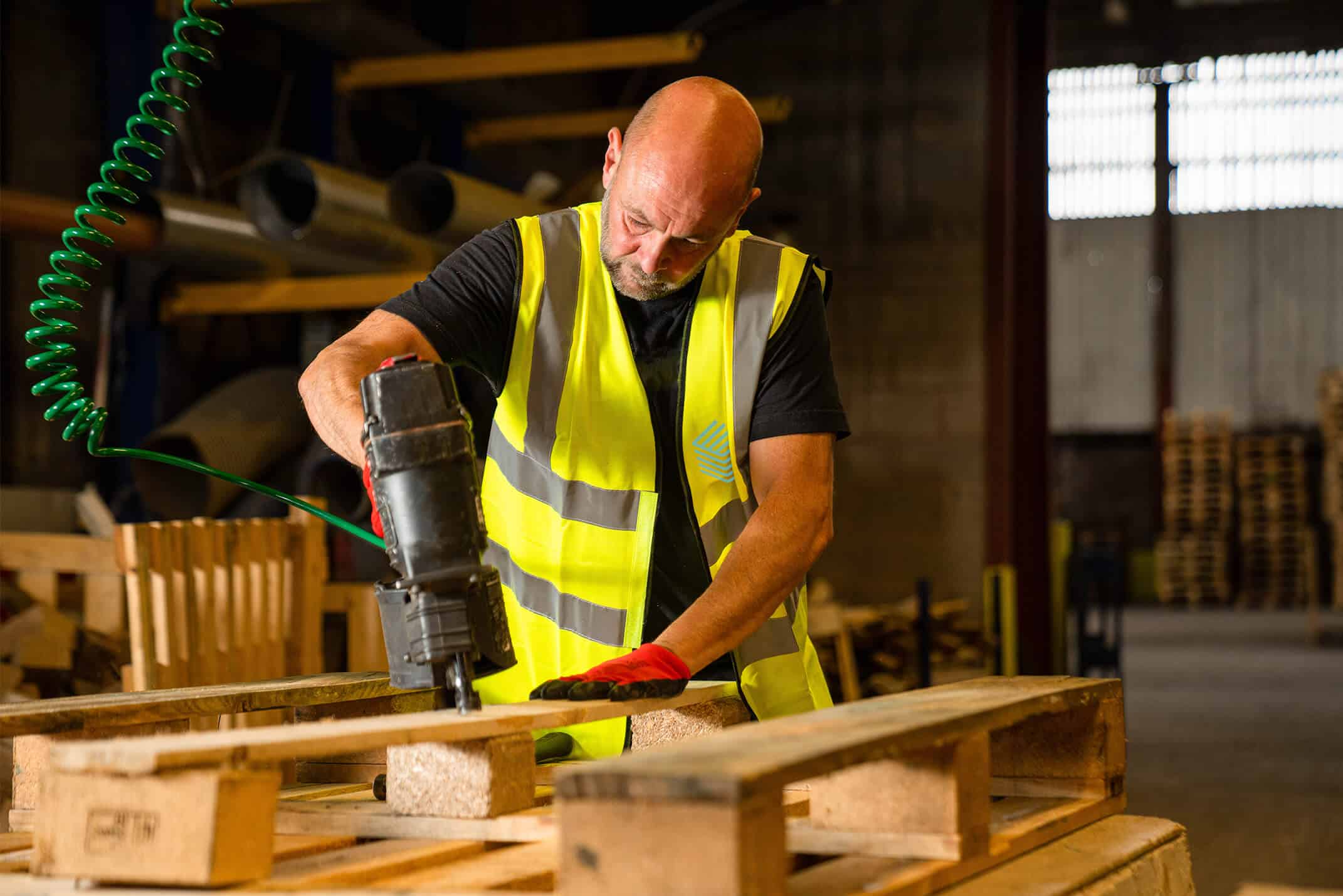Wooden pallets are used in a wide variety of industry sectors across the UK. They are an essential part of the haulage and shipping industries, as well as for warehousing and storage solutions. Being weighed down with products, moved from one place to another along the supply chain, and stacked high on top of one another, it’s no surprise that they suffer from wear and tear.
Fortunately, everyday damage doesn’t mean the end for your wooden pallets. Unlike plastic models, a timber pallet can be quickly and easily repaired in most cases. In this article, we’re going to discuss how repairing damaged wooden pallets can be beneficial to your business compared to buying new replacement units.
Common types of wooden pallet repairs
While your wooden pallets might suffer all kinds of damage through day-to-day use, there are certain repairs that crop up time and time again. These are some of the most common repair jobs we undertake at Chris Reynolds Pallets.
- replacing loose parts
- replacing damaged or missing boards
- replacing missing nails
- aligning the pallet surfaces
Cost-effective pallet repairs
Compared to manufacturing a new timber pallet, performing any of the repairs listed above is significantly cheaper. They require fewer raw materials and take less time to repair than to cut and build from scratch. If your company deals with large numbers of wooden pallets, these savings soon add up, making a significant difference to your bottom line.
Better for the environment
It goes without saying that repairing your damaged wooden pallets is more eco-friendly than ordering new pallets. Repairing wooden pallets uses fewer resources than manufacturing a new pallet from scratch, and we’re not just talking about the amount of wood used in their production. Creating a new pallet also uses more energy than a pallet repair. If you want to maintain your company’s green credentials, wooden pallet repairs are the way to go.
Mix and match
Some companies choose to keep a mixture of new and repaired wooden pallets in stock, rotating them in and out of use as needed. This allows them to keep running their business efficiently, reducing the risk of downtime as they cycle in new pallets while their damaged pallets are being repaired. Since the repaired pallets are good as new, they can take their place in the rotation when the current stock becomes damaged and needs to be sent off for repair.
Repairing heat-treated wooden pallets
If your stock of pallets is heat-treated to meet ISPM-15 requirements, any repaired units will need to undergo the treatment again to ensure compliance with the regulations. Any existing ISPM-15 markings will need to be removed prior to repair and reapplied once the repaired pallets have been subjected to the heat treatment process again.
Recycling damaged wooden pallets
Sometimes, the damage to a wooden pallet is so extensive that it would cost less to replace it with a new one than it would to repair it. Even when this happens, your old pallet doesn’t need to go to waste. All wooden materials can be recycled by being shredded into wood chippings, sawdust, or biofuel.



